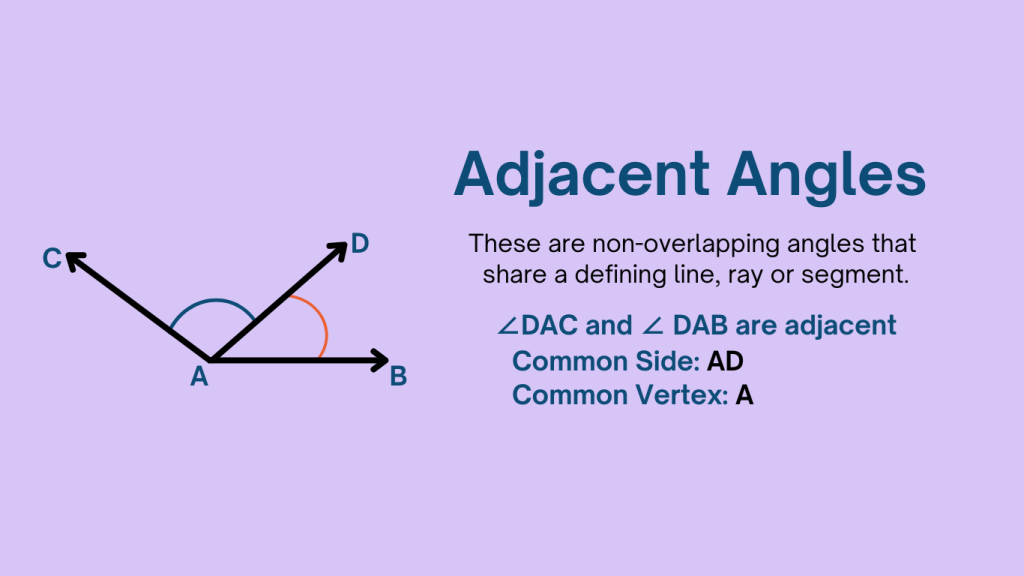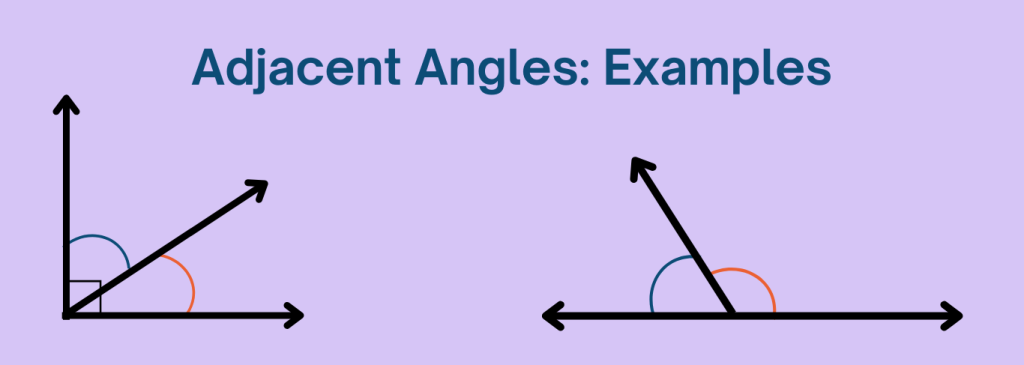Understanding Adjacent Angles
Introduction
Adjacent Angles
In the realm of geometry, the concept of adjacent angles plays a crucial role in understanding the relationships between angles and their properties. Let’s delve into the world of adjacent angles and explore their significance in geometric calculations and problem-solving.
Analogy of Definition
What are Adjacent Angles?
Adjacent angles refer to two angles that share a common vertex and a common side but do not overlap. In simpler terms, they are angles that are side by side and do not intersect. In the following figure, we can see that ∠DAC and ∠ DAB are adjacent, as they share a same vertex, A, and same side AD.

Method
Properties of Adjacent Angles
Adjacent angles have a few key properties that help in understanding their relationships in geometry:
- Common Vertex and Side: Adjacent angles share a common vertex and a common side, which means they sit next to each other on the same plane.
- No Overlap: Despite sharing a side, adjacent angles do not overlap. Their interiors do not intersect.
- Linear Pair: When adjacent angles form a straight line, they are called a linear pair. The sum of the angles in a linear pair is always 180°, making them supplementary.
These properties are essential in identifying and working with adjacent angles in various geometric problems.
Identifying Adjacent Angles
Common Vertex: Adjacent angles always share the same vertex, which is the point where the two angles meet. This is the first clue that two angles might be adjacent.
Common Side: In addition to sharing a vertex, adjacent angles also share one side or ray. This common side lies between the two angles, forming a boundary for both.
For example, if two angles are formed by three rays coming from a single point (vertex), and two of these rays form a boundary between the angles, those angles are adjacent.
Examples

Quiz
Tips and Tricks
1. Identifying Adjacent Angles
Tip: To identify adjacent angles, look for angles that share a common vertex and a common side without overlapping.
2. Calculating the Sum of Adjacent Angles
Tip: When adjacent angles form a linear pair (meaning they are on the same line), their sum is always 180°, making them supplementary. But in other cases, such as when adjacent angles are part of a polygon or other figures, their sum can be less than or more than 180°.
3. Real-Life Applications of Adjacent Angles
Tip: Adjacent angles are used in architectural designs to ensure proper alignment and symmetry.The angles are adjacent and contribute to the aesthetic appeal of the structure.
Real life application
Real-Life Applications of Adjacent Angles:
Scenario: Architectural Design
Architects utilize the concept of adjacent angles in designing building facades, ensuring that the angles formed by intersecting lines are visually appealing and structurally sound.
Scenario: Engineering Drawings
Engineers use adjacent angles to create precise and accurate drawings for construction projects, ensuring that the angles formed by structural elements are properly aligned and interconnected.
Scenario: Navigation and Orientation
In navigation, adjacent angles are used to determine the direction and orientation of objects and landmarks, aiding in accurate positioning and mapping of geographical locations.
FAQ's
Like? Share it with your friends






